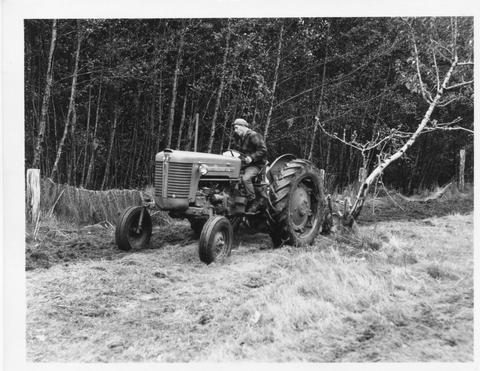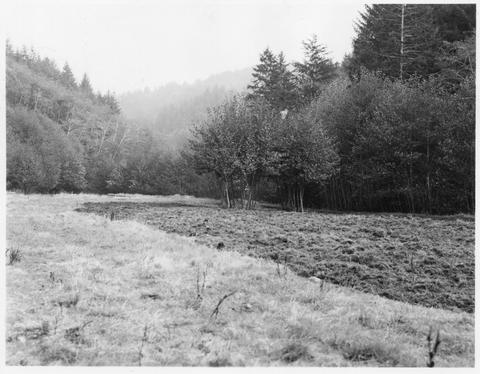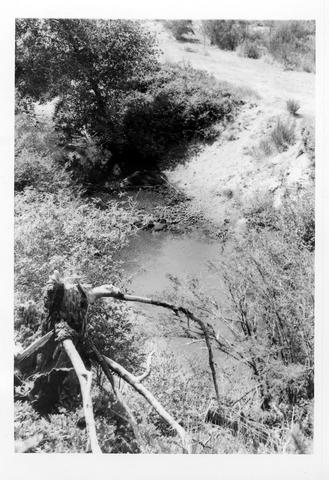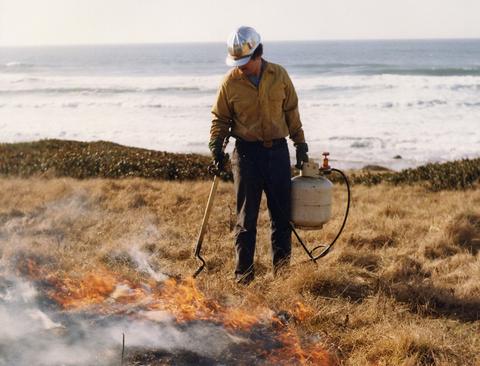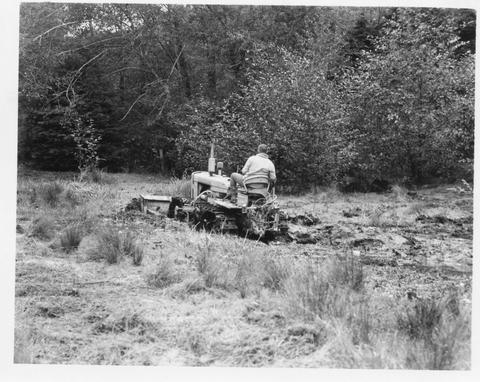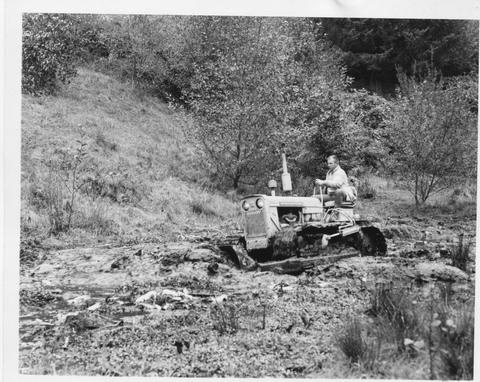Search
« Previous | 8,501 - 8,600 of 8,700 | Next »
Search Results
-
8502. [Image] Elk habitat improvement -- Partial plowed field
-
8503. [Image] Elk habitat improvement -- Man with plow
-
8504. [Image] Looking up a stream coastal habitat
-
8505. [Image] Pacific yellowthroat habitat
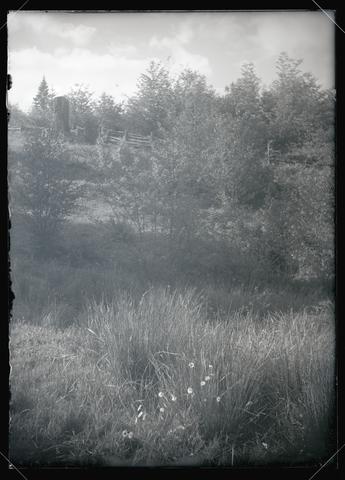 A general view of Pacific yellowthroat habitat.
A general view of Pacific yellowthroat habitat.Citation -
8506. [Image] Salmon Habitat on Creek
-
8508. [Image] Elk habitat improvement -- Man on plow
-
8509. [Image] Elk habitat improvement -- Man with tractor
-
8510. [Article] Lower Umpqua Watershed Analysis, 1997
Abstract -- This analysis of the Lower Umpqua River watershed (2% of the total Umpqua River drainage area) in the southern Coast Range includes watershed characterization, issues, inherent landscape instability, ...Citation -
8511. [Article] Spring Chinook Salmon in the Willamette and Sandy Rivers, October 2003 through September 2004
Abstract -- The Oregon Fish and Wildlife Commission adopted the Native Fish Conservation Policy (ODFW 2003a) and the Hatchery Management Policy (ODFW 2003b) in part to reduce adverse impacts of hatchery ...Citation -
Abstract -- Although the present size of the bull trout population within the Odell Lake Recovery Unit is unknown, it appears to be quite small. Spawning by bull trout of the Odell Lake Recovery Unit occurs ...
Citation -
8513. [Article] Native Trout Studies, 2001
Abstract -- Summary: We radio-tagged 34 adult westslope cutthroat trout in Rail Creek and Roberts Creek in the mainstem John Day River subbasin. These fish were located weekly by telemetry, as were those ...Citation -
8514. [Article] Aquatic Habitat in Oregon Coastal Streams: Winter, 1999-2001
Abstract -- We compared summer and winter aquatic habitat conditions to determine patterns of seasonal habitat dynamics for coho salmon (Oncorhynchus kisutch). Winter sites corresponded to summer sites, ...Citation -
8515. [Article] 2000-2002, Effectiveness Monitoring for the Western Oregon Stream Restoration Program
Abstract -- This report characterizes change in habitat conditions of restoration projects competed by Western Oregon Stream Restoration Program biologists. Typical restoration activities included the ...Citation -
8516. [Article] ODFW Deer and Elk Winter Range for Eastern Oregon (2012)
Abstract -- General outline of deer and elk winter range for eastern Oregon, east of the crest of the Cascades. The Oregon Department of Fish and Wildlife considers Winter Range to be that area normally ...Citation -
Abstract -- This dataset represents both a derivation and synthesis of seven Oregon Fish Habitat Distribution datasets (winter steelhead, summer steelhead, coho salmon, spring Chinook, fall Chinook, chum ...
Citation -
8518. [Article] Oregon Fish Habitat Distribution Data
Abstract -- Oregon Fish Habitat Distribution.These data describe areas of suitable habitat believed to be used currently or historically by native or non-native fish populations. The term "currently" is ...Citation -
Abstract -- Coos Watershed Association’s (CoosWA) coho life history in tide gated lowland coastal streams, a life cycle monitoring (LCM) project, adapts and advances a long-term monitoring study initiated ...
Citation -
8520. [Article] Draft Habitat Management Plan for Spalding's Catchfly in the Wallowa Lake Key Conservation Area
Abstract -- Draft management plan for Spalding's catchfly (Silene spaldingii) in the Wallowa Lake Key Conservation Area.Citation -
Abstract -- Aquatic habitat surveys were conducted in the South Fork Coos River located within the Coos Watershed. The surveys followed the Oregon Department of Fish and Wildlife (ODFW) Aquatic Inventory's ...
Citation -
Abstract -- This document addresses two species of deer (Columbian black-tailed deer: Odocoileus hemionus columbianus and Columbian white-tailed deer: Odocoileus virginianus leucurus) and one species of ...
Citation -
8523. [Article] ODFW Mountain Goat Occupied Habitat in Oregon (2013)
Abstract -- Provides a general idea of where mountain goats occur in Oregon.Citation -
8524. [Article] ODFW Bighorn Sheep Occupied Habitat in Oregon (2016)
Abstract -- Bighorn sheep occupied habitat, 2016Citation -
8525. [Article] Willamette Biological Opinion Chinook Reservoir Research 2010
Abstract -- We investigated life-history characteristics of juvenile Chinook salmon rearing in Cougar and Lookout Point reservoirs. The study objectives were to provide information on juvenile Chinook ...Citation -
8526. [Article] Willamette Biological Opinion Chinook Reservoir Research 2011
Abstract -- We investigated several life-history characteristics of juvenile Chinook salmon (Oncorhynchus tshawytscha) rearing in Detroit, Cougar and Lookout Point reservoirs to aid in the development ...Citation -
8527. [Article] Willamette Biological Opinion Chinook Reservoir Research 2012
Abstract -- We investigated several life-history characteristics of juvenile spring Chinook salmon Oncorhynchus tshawytscha rearing in Detroit, Cougar and Lookout Point reservoirs to aid in the development ...Citation -
8528. [Article] Willamette Biological Opinion Chinook Reservoir Research 2013
Abstract -- In this report we investigate aspects of juvenile spring Chinook salmon Oncorhynchus tshawytscha life-history and rearing in select Willamette Valley Project (WVP) reservoirs to aid in the ...Citation -
8529. [Article] Willamette Biological Opinion Chinook Reservoir Research 2014
Abstract -- In this report we investigate several aspects of juvenile spring Chinook salmon Oncorhynchus tshawytscha life history and rearing in select Willamette Valley Project (WVP) reservoirs to aid ...Citation -
8530. [Article] Willamette Biological Opinion Chinook Steelhead Outmigration 2010 Annual Report - Pilot Study
Abstract -- We operated 5-ft rotary screw traps upstream, near the head of Detroit, Foster, Cougar and Lookout Point reservoirs in order to collect spring Chinook salmon migrant information needed for ...Citation -
Abstract -- To aid in the development of downstream passage options for juvenile salmonids at upper Willamette reservoirs, we present in this report results from our screw trapping operations upstream ...
Citation -
Abstract -- To aid in the development of downstream passage options for juvenile salmonids at Upper Willamette reservoirs, we present results from screw trapping operations conducted upstream and downstream ...
Citation -
Abstract -- The goal of this project was to provide research and monitoring data that can be used to evaluate options for development of downstream passage for juvenile salmonids Oncorhynchus spp. at upper ...
Citation -
Abstract -- The goal of this project was to provide research and monitoring data regarding fish species composition, timing and size of fish entering and exiting Willamette Valley Project (WVP) reservoirs. ...
Citation -
Abstract -- The goal of this project was to provide information regarding fish species composition, abundance, timing and size of fish entering and exiting Willamette Valley Project (WVP) reservoirs that ...
Citation -
Abstract -- The goal of this project was to provide information regarding fish species composition, abundance, timing and size of fish entering and exiting Willamette Valley Project (WVP) reservoirs that ...
Citation -
Abstract -- Possible risks of artificial propagation programs have been well documented. Hazards include disease transfer, competition for food and spawning sites, increased predation, increased incidental ...
Citation -
8538. [Article] Willamette Biological Opinion Hatchery Research 2002-03 Addendum
Abstract -- This report is an addendum to the report on activities in 2002 that was generated in December of that year. This report also presents results of spawning surveys and stomach content analysis ...Citation -
Abstract -- RECOMMENDATIONS 1. The number of hatchery Chinook spawning with wild fish upstream of Leaburg Dam should be reduced. The percentage of carcasses from hatchery fish in spawning areas upstream ...
Citation -
Abstract -- Possible risks of artificial propagation programs have been well documented. Hazards include disease transfer, competition for food and spawning sites, increased predation, increased incidental ...
Citation -
Abstract -- Possible risks of artificial propagation programs have been well documented. Hazards include disease transfer, competition for food and spawning sites, increased predation, increased incidental mortality ...
Citation -
Abstract -- Possible risks of artificial propagation programs have been well documented. Hazards include disease transfer, competition for food and spawning sites, increased predation, increased incidental ...
Citation -
Abstract -- This report fulfills a requirement under Task Order NWPPM-09-FH-05, covering activities of July 2009–May 2010 that were implemented by ODFW on behalf of the Corps to assist with meeting the ...
Citation -
Abstract -- Task 1.1: Distribution, Abundance, and Proportion of Hatchery and Natural-Origin Chinook Salmon: Counts of spring Chinook redds were similar in 2010 compared to the 2002–2009 averages for the ...
Citation -
8545. [Article] Willamette Biological Opinion Hatchery Research 2011 Annual Report - Baseline Monitoring
Abstract -- In the Willamette Basin upstream of Willamette Falls (Figure 1), there are four distinct spring Chinook salmon hatchery programs (i.e., North Santiam [Stock 21], South Santiam [Stock 24], McKenzie ...Citation -
Abstract -- In the Willamette Basin upstream of Willamette Falls (Figure 1), there are four distinct spring Chinook salmon hatchery programs (North Santiam [Stock 21], South Santiam [Stock 24], McKenzie ...
Citation -
Abstract -- In the Willamette Basin upstream of Willamette Falls (Figure 1), there are four distinct spring Chinook salmon hatchery programs (North Santiam [Stock 21], South Santiam [Stock 24], McKenzie ...
Citation -
8548. [Article] Willamette BiOp - Evaluation of the Trap and Transport of Adult Steelhead Above USACE Project Dams in the Upper Willamette Basin
Abstract -- Wild, winter-run steelhead are trapped and transported above US Army Corps dams in the Willamette River basin in an effort to reintroduce these fish into historical habitats as part of federal ...Citation -
8549. [Article] Willamette BiOp - Genetic Stock Identification and Relative Natural Production of Willamette River Steelhead
Abstract -- We used genotypic data from 15 microsatellite loci to characterize the stock structure of Oncorhynchus mykiss in the upper Willamette River basin. We then used two analytical approaches, implemented ...Citation -
Abstract -- Fishery managers are commonly tasked with the basic question "Will the contemporary habitat above a barrier support the fish populations that historically resided in the watershed?" Managers ...
Citation -
Abstract -- Includes a sub-project for Western Oregon Big Game Habitat Studies performed July 1, 1974 - June 30, 1975. The studies objective was Develop guidelines for producing the highest quality big ...
Citation -
8552. [Article] Columbia River Basin - System Configuration Study; Snake River Drawdown, Migratory Canal, Upstream Collector Planning Aid Report
Abstract -- This Planning Aid Report (PAR) is provided to the U.S. Army Corps of Engineers, Walla Walla District, to assist with reconnaissance-level planning for the System Configuration Study (SCS), ...Citation -
8553. [Article] ODFW Access and Habitat Areas and Projects in Oregon (2017)
Abstract -- To show access areas supported by, or associated with, the Oregon Department of Fish and Wildlife (ODFW) Access and Habitat Program. For more details see: https://myodfw.com/articles/hunting-private-lands-access-habitat-program; ...Citation -
8554. [Article] Umatilla Basin Natural Production Monitoring and Evaluation; Annual Progress Report 1994 - 1995
Abstract -- This report summarizes the activities of the Umatilla Basin Natural Production Monitoring and Evaluation Project (UBNPME) from September 30, 1994 to September 29, 1995. This program was funded ...Citation -
8555. [Article] The Oregon Conservation Strategy, 2006
Abstract -- State and federal agencies, as well as other organizations, have developed and led many plans during the years to guide conservation of Oregon's fish and wildlife and their habitats. Most of ...Citation -
8556. [Article] Evaluation of Juvenile Salmonid Outmigration and Survival in the Lower Umatilla River Basin; Annual Report 2009
Abstract -- In 2009, 3,745 natural and 28,880 hatchery smolts were collected in the juvenile bypass facility at Three Mile Falls Dam (TMFD). A total of 2,876 PIT tagged juvenile salmon and steelhead and ...Citation -
Abstract -- Scale and otolith analyses were used to determine if high marine survival estimates observed for coho salmon at an Oregon Department of Fish and Wildlife Life Cycle Monitoring Project site ...
Citation -
Abstract -- Rotary screw traps, located at four sites in the Grande Ronde River basin, were used to characterize aspects of early life history exhibited by juvenile Onchorhychus mykiss during migration ...
Citation -
Abstract -- The goal of the project was to characterize the quality, quantity, and use of winter concealment habitat by juvenile spring chinook salmon Oncorhynchus tshawytscha in hatching areas of the ...
Citation -
Abstract -- The goal of the project was to characterize the quality, quantity, and use of winter concealment habitat by juvenile spring Chinook salmon Oncorhynchus tshawytscha in hatching areas of the ...
Citation -
Abstract -- The goal of this project is to investigate the critical habitat, abundance, migration patterns, survival, and alternate life history strategies exhibited by spring Chinook salmon and summer ...
Citation -
Abstract -- The goal of this project is to investigate the critical habitat, abundance, migration patterns, survival, and alternate life history strategies exhibited by spring Chinook salmon and summer ...
Citation -
Abstract -- The goal of this project is to investigate the critical habitat, abundance, migration patterns, survival, and alternate life history strategies exhibited by spring Chinook salmon and summer ...
Citation -
Abstract -- The goal of this project is to investigate the critical habitat, abundance, migration patterns, survival, and alternate life history strategies exhibited by spring Chinook salmon and summer ...
Citation -
Abstract -- The goal of this project is to investigate the critical habitat, abundance, migration patterns, survival, and alternate life history strategies exhibited by spring Chinook salmon and summer ...
Citation -
8566. [Article] Fish Research Project Oregon; John Day Basin Spring Chinook Salmon Escapement and Productivity Monitoring - Annual Report 2000
Abstract -- The John Day River subbasin supports one of the last remaining intact wild populations of spring Chinook salmon and summer steelhead in the Columbia River Basin. These populations, however, ...Citation -
8567. [Article] Fish Research Project Oregon; John Day Basin Spring Chinook Salmon Escapement and Productivity Monitoring - Annual Progress Report 2001
Abstract -- The John Day River subbasin supports one of the last remaining intact wild populations of spring Chinook salmon and summer steelhead in the Columbia River Basin. These populations, however, ...Citation -
8568. [Article] Escapement and Productivity of Spring Chinook and Summer Steelhead in the John Day River Basin - Annual Report 2003
Abstract -- The John Day River subbasin supports one of the last remaining intact wild populations of spring Chinook salmon and summer steelhead in the Columbia River Basin. These populations, however, ...Citation -
8569. [Article] Escapement and Productivity of Spring Chinook and Summer Steelhead in the John Day River Basin - Annual Report 2004
Abstract -- The John Day River subbasin supports one of the last remaining intact wild populations of spring Chinook salmon and summer steelhead in the Columbia River Basin. These populations, however, ...Citation -
8570. [Article] Escapement and Productivity of Spring Chinook and Summer Steelhead in the John Day River Basin - Technical Report 2005
Abstract -- The John Day River subbasin supports one of the last remaining intact wild populations of spring Chinook salmon and summer steelhead in the Columbia River Basin. These populations, however, ...Citation -
8571. [Article] Escapement and Productivity of Spring Chinook Salmon and Summer Steelhead in the John Day River Basin - Annual Technical Report 2006
Abstract -- The John Day River subbasin supports one of the last remaining intact wild populations of spring Chinook salmon and summer steelhead in the Columbia River Basin. These populations, however, ...Citation -
8572. [Article] Productivity of Spring Chinook Salmon and Summer Steelhead in the John Day River Basin - Annual Technical Report 2007
Abstract -- The John Day River subbasin supports one of the last remaining intact wild populations of spring Chinook salmon and summer steelhead in the Columbia River Basin. These populations, however, ...Citation -
8573. [Article] Productivity of Spring Chinook Salmon and Summer Steelhead in the John Day River Basin - Annual Technical Report 2008
Abstract -- The John Day River subbasin supports one of the last remaining intact wild populations of spring Chinook salmon and summer steelhead in the Columbia River Basin. These populations, however, ...Citation -
8574. [Article] Productivity of Spring Chinook Salmon and Summer Steelhead in the John Day River Basin - Annual Technical Report 2009
Abstract -- The John Day River subbasin supports one of the last remaining intact wild populations of spring Chinook salmon and summer steelhead in the Columbia River Basin. These populations, however, ...Citation -
8575. [Article] Productivity of Spring Chinook Salmon and Summer Steelhead in the John Day River Basin - Annual Technical Report 2010
Abstract -- The John Day River subbasin supports one of the last remaining intact wild populations of spring Chinook salmon and summer steelhead in the Columbia River Basin. These populations, however, ...Citation -
8576. [Article] Productivity of Spring Chinook Salmon and Summer Steelhead in the John Day River Basin - Annual Technical Report 2011
Abstract -- The John Day River subbasin supports one of the last remaining intact wild populations of spring Chinook salmon and summer steelhead in the Columbia River Basin. These populations, however, ...Citation -
Abstract -- The Independent Scientific Review Panel (ISRP), in their guidance on monitoring, strongly recommended that the region move away from index surveys and embrace probabilistic sampling for most ...
Citation -
Abstract -- The Independent Scientific Review Panel (ISRP), in their guidance on monitoring, strongly recommended that the region move away from index surveys and embrace probabilistic sampling for most ...
Citation -
Abstract -- The Independent Scientific Review Panel (ISRP), in their guidance on monitoring, strongly recommended that the region move away from index surveys and embrace probabilistic sampling for most ...
Citation -
Abstract -- The Independent Scientific Review Panel (ISRP), in their guidance on monitoring, strongly recommended that the region move away from index surveys and embrace probabilistic sampling for most ...
Citation -
Abstract -- The Independent Scientific Review Panel (ISRP), in their guidance on monitoring, strongly recommended that the region move away from index surveys and embrace probabilistic sampling for most ...
Citation -
Abstract -- The Independent Scientific Review Panel (ISRP), in their guidance on monitoring, strongly recommended that the region move away from index surveys and embrace probabilistic sampling for most ...
Citation -
Abstract -- The Independent Scientific Review Panel (ISRP), in their guidance on monitoring, strongly recommended that the region move away from index surveys and embrace probabilistic sampling for most ...
Citation -
8584. [Article] Steelhead Escapement and Juvenile Production Monitoring in the John Day Basin - Annual Technical Report 2011
Abstract -- The Independent Scientific Review Panel (ISRP), in their guidance on monitoring, strongly recommended that the region move away from index surveys and embrace probabilistic sampling for most ...Citation -
8585. [Article] Fish Population Monitoring in the Middle Fork John Day River Intensively Monitored Watershed - Annual Technical Report 2008
Abstract -- Within the Middle Fork John Day River IMW (MFJDR_IMW), several habitat factors have been identified as limiting for the recovery of summer steelhead. Degraded floodplain and channel structure, ...Citation -
8586. [Article] Fish Population Monitoring in the Middle Fork John Day River Intensively Monitored Watershed - Annual Technical Report 2009
Abstract -- Within the Middle Fork John Day River IMW (MFJDR_IMW), several habitat factors have been identified as limiting for the recovery of summer steelhead. Degraded floodplain and channel structure, ...Citation -
8587. [Article] Fish Population Monitoring in the Middle Fork John Day River Intensively Monitored Watershed - Annual Technical Report 2010
Abstract -- Within the Middle Fork John Day River IMW (MFJDR_IMW), several habitat factors have been identified as limiting for the recovery of summer steelhead. Degraded floodplain and channel structure, ...Citation -
8588. [Article] Fish Population Monitoring in the Middle Fork John Day River Intensively Monitored Watershed - Annual Technical Report 2011
Abstract -- Within the Middle Fork John Day River IMW (MFJDR_IMW), several habitat factors have been identified as limiting for the recovery of summer steelhead. Degraded floodplain and channel structure, ...Citation -
8589. [Article] Fish Population Monitoring in the Middle Fork John Day River Intensively Monitored Watershed - Annual Technical Report 2012
Abstract -- Within the Middle Fork John Day River IMW (MFJDR_IMW), several habitat factors have been identified as limiting for the recovery of summer steelhead. Degraded floodplain and channel structure, ...Citation -
8590. [Article] Fish Population Monitoring in the Middle Fork John Day River Intensively Monitored Watershed - Annual Technical Report 2013-2015
Abstract -- Within the Middle Fork John Day River IMW (MFJDR_IMW), several habitat factors have been identified as limiting for the recovery of summer steelhead. Degraded floodplain and channel structure, ...Citation -
8591. [Article] Bates State Park-Master Plan 2010
Abstract -- The Bates State Park Master Plan is the result of a public involvement process that engaged local residents, neighboring agencies, The Confederated Tribes of Warm Springs, natural resource ...Citation -
8592. [Article] Fish Research Project Oregon; John Day Basin Chinook Salmon Escapement and Productivity Monitoring - Annual Progress Report 2002
Abstract -- Spring (stream-type) chinook spawning ground surveys were conducted in four main spawning areas (Mainstem, Middle Fork, North Fork, and Granite Creek System) and three minor spawning areas ...Citation -
Abstract -- Smolts of spring Chinook salmon Oncorhynchus tshawytscha experience substantial mortality while migrating through free-flowing reaches of the Snake River basin before reaching Lower Granite ...
Citation -
8594. [Article] A Compendium of Grande Ronde River and Imnaha River Basins Spring Chinook Salmon Spawning Ground Surveys Conducted from 1948 through 2003
Abstract -- A variety of methods have been used to estimate the number of spring/summer Chinook salmon returning to spawn in Northeast Oregon streams. However, little quantitative information has been ...Citation -
8595. [Article] Grande Ronde Basin Spring Chinook Salmon Captive Broodstock Program 1995-2002 project status report
Abstract -- The Grande Ronde Basin once supported large runs of chinook salmon Oncorhynchus tshawytscha and estimated peak escapements in excess of 10,000 occurred as recently as the late 1950’s (U.S. ...Citation -
8596. [Article] Steelhead Escapement Monitoring In the Upper Grande Ronde River - Annual Technical Report 2008
Abstract -- The Upper Grande Ronde River basin supports a population of summer steelhead O. mykiss that has been defined by segregating it from the other three populations inhabiting the Grande Ronde River ...Citation -
8597. [Article] Steelhead Escapement Monitoring In the Upper Grande Ronde River - Annual Technical Report 2009
Abstract -- The Upper Grande Ronde River basin supports a population of summer steelhead O. mykiss that has been defined by segregating it from the other three populations inhabiting the Grande Ronde River ...Citation -
8598. [Article] Steelhead Escapement Monitoring In the Upper Grande Ronde River - Annual Technical Report 2010
Abstract -- The Upper Grande Ronde River basin supports a population of summer steelhead O. mykiss that has been defined by segregating it from the other three populations inhabiting the Grande Ronde River ...Citation -
8599. [Article] Steelhead Escapement Monitoring In the Upper Grande Ronde River - Annual Technical Report 2011
Abstract -- The UGRR basin supports a population of summer steelhead that has been segregated from three other populations in the entire Grande Ronde River basin based on topographic, genetic, observational, ...Citation -
8600. [Article] Steelhead Escapement Monitoring in the Upper Grande Ronde River and Joseph Creek Basins - Annual Technical Report 2012
Abstract -- Summer steelhead in the Grande Ronde River basin fall within the Snake River Distinct Population Segment (DPS) and are listed as threatened under the Endangered Species Act (62 FR 43937; August ...Citation
